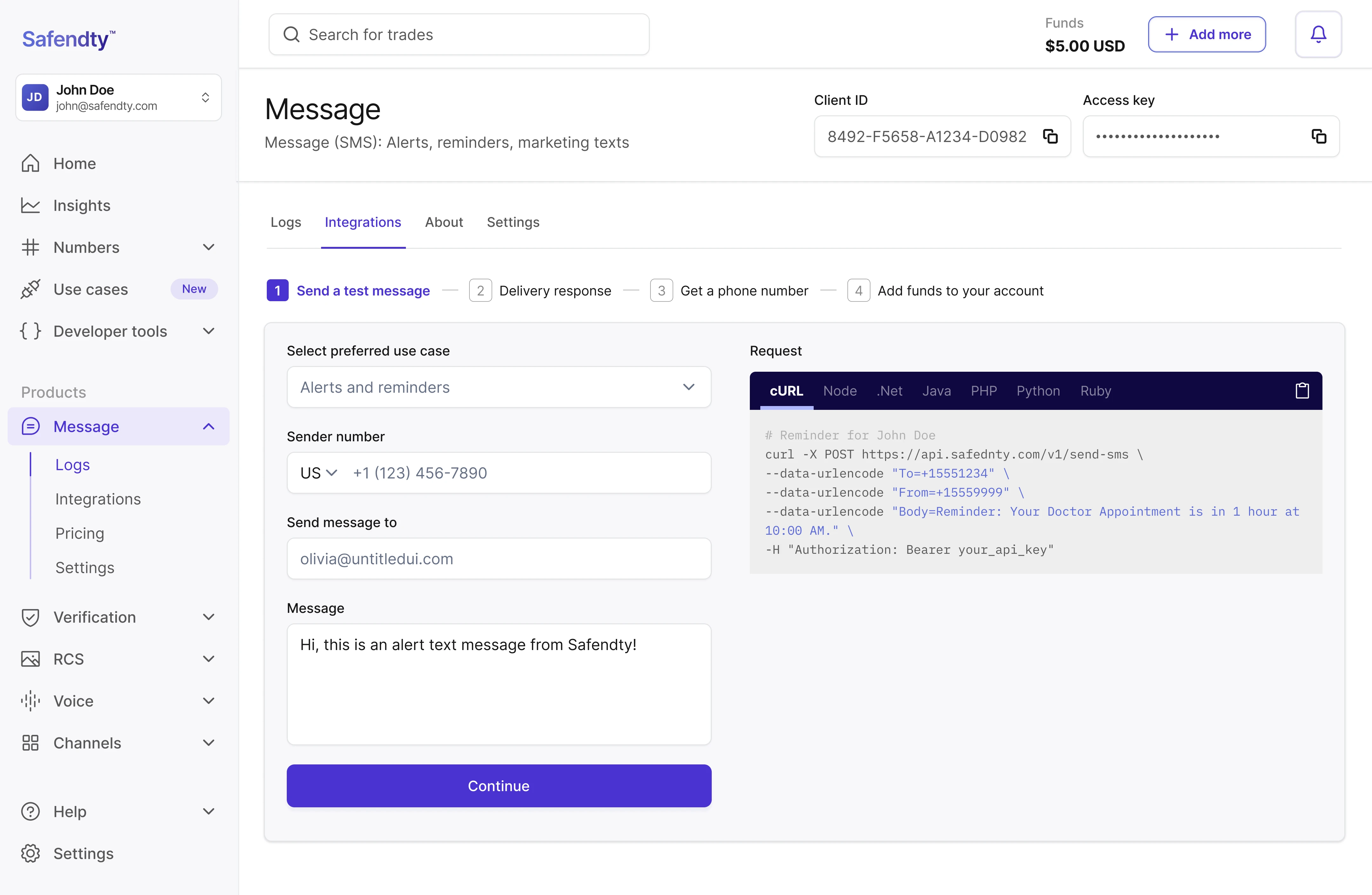Lead UX/UI Designer, 2023 - 2024
Building Safendty's design system from the ground up
Safendty provides API solutions for user verification and engagement, helping businesses protect against fraud and improve customer communication. I led the creation of their first design system to unify three fragmented platforms and establish scalable design standards.
Problem
Safendty's three platforms looked and worked like completely different products, creating confusion for users and inefficiency for teams. • Each platform had different colors, typography, buttons, and layouts • Developers made style assumptions during implementation, creating more inconsistency • Design team was duplicating work across platforms • No shared standards meant constant rework and mismatched experiences
Problem
Safendty's three platforms looked and worked like completely different products, creating confusion for users and inefficiency for teams. • Each platform had different colors, typography, buttons, and layouts • Developers made style assumptions during implementation, creating more inconsistency • Design team was duplicating work across platforms • No shared standards meant constant rework and mismatched experiences
Problem
Safendty's three platforms looked and worked like completely different products, creating confusion for users and inefficiency for teams. • Each platform had different colors, typography, buttons, and layouts • Developers made style assumptions during implementation, creating more inconsistency • Design team was duplicating work across platforms • No shared standards meant constant rework and mismatched experiences
Goals
• Standardize user experience across all platforms • Cut down design and development time through reusable components • Build a scalable system that grows with the business
Goals
• Standardize user experience across all platforms • Cut down design and development time through reusable components • Build a scalable system that grows with the business
Goals
• Standardize user experience across all platforms • Cut down design and development time through reusable components • Build a scalable system that grows with the business
Results
• 40% reduction in design time through reusable components • Eliminated style inconsistencies across all three platforms • Faster development cycles with clear implementation guidelines • Strong internal adoption with comprehensive documentation support
Results
• 40% reduction in design time through reusable components • Eliminated style inconsistencies across all three platforms • Faster development cycles with clear implementation guidelines • Strong internal adoption with comprehensive documentation support
Results
• 40% reduction in design time through reusable components • Eliminated style inconsistencies across all three platforms • Faster development cycles with clear implementation guidelines • Strong internal adoption with comprehensive documentation support
How I contributed
Led design system strategy and team • Managed 3 designers through 2-week sprint cycles, prioritizing components based on real project needs while building from atoms to complex organisms Created comprehensive component library • Built standard components including sidebars, buttons, all input types • Defined foundational styles like typography scales, color tokens, spacing, and grid systems Established design-to-development workflow • Worked directly with developers to understand their needs • Created detailed handoff documentation to prevent style assumptions and implementation inconsistencies Built scalable documentation system • Created usage guidelines, component specs, and implementation notes • Supported long-term team growth and onboarding
How I contributed
Led design system strategy and team • Managed 3 designers through 2-week sprint cycles, prioritizing components based on real project needs while building from atoms to complex organisms Created comprehensive component library • Built standard components including sidebars, buttons, all input types • Defined foundational styles like typography scales, color tokens, spacing, and grid systems Established design-to-development workflow • Worked directly with developers to understand their needs • Created detailed handoff documentation to prevent style assumptions and implementation inconsistencies Built scalable documentation system • Created usage guidelines, component specs, and implementation notes • Supported long-term team growth and onboarding
How I contributed
Led design system strategy and team • Managed 3 designers through 2-week sprint cycles, prioritizing components based on real project needs while building from atoms to complex organisms Created comprehensive component library • Built standard components including sidebars, buttons, all input types • Defined foundational styles like typography scales, color tokens, spacing, and grid systems Established design-to-development workflow • Worked directly with developers to understand their needs • Created detailed handoff documentation to prevent style assumptions and implementation inconsistencies Built scalable documentation system • Created usage guidelines, component specs, and implementation notes • Supported long-term team growth and onboarding
Key learnings
• Building design systems alongside active projects requires flexible prioritization but creates immediate value • Developer collaboration from day one prevents implementation inconsistencies • Comprehensive documentation is essential for team adoption and long-term success • Starting with foundational elements (atoms) creates a solid base for complex components
Key learnings
• Building design systems alongside active projects requires flexible prioritization but creates immediate value • Developer collaboration from day one prevents implementation inconsistencies • Comprehensive documentation is essential for team adoption and long-term success • Starting with foundational elements (atoms) creates a solid base for complex components
Key learnings
• Building design systems alongside active projects requires flexible prioritization but creates immediate value • Developer collaboration from day one prevents implementation inconsistencies • Comprehensive documentation is essential for team adoption and long-term success • Starting with foundational elements (atoms) creates a solid base for complex components
Disclaimer: This project presented is based on a real project I contributed to during my professional experience. To respect confidentiality agreements, all branding, names, visuals, and content have been anonymized.
















